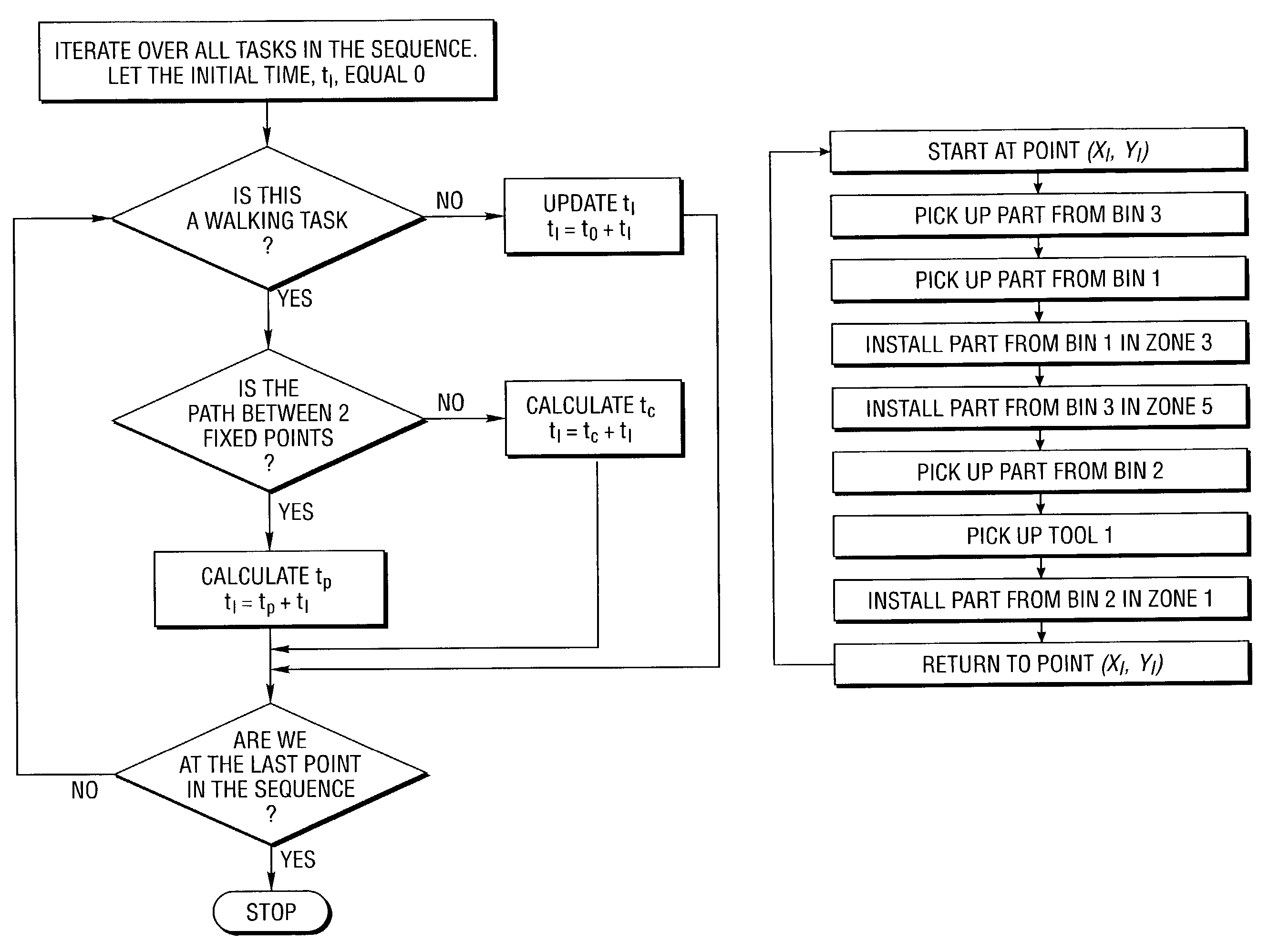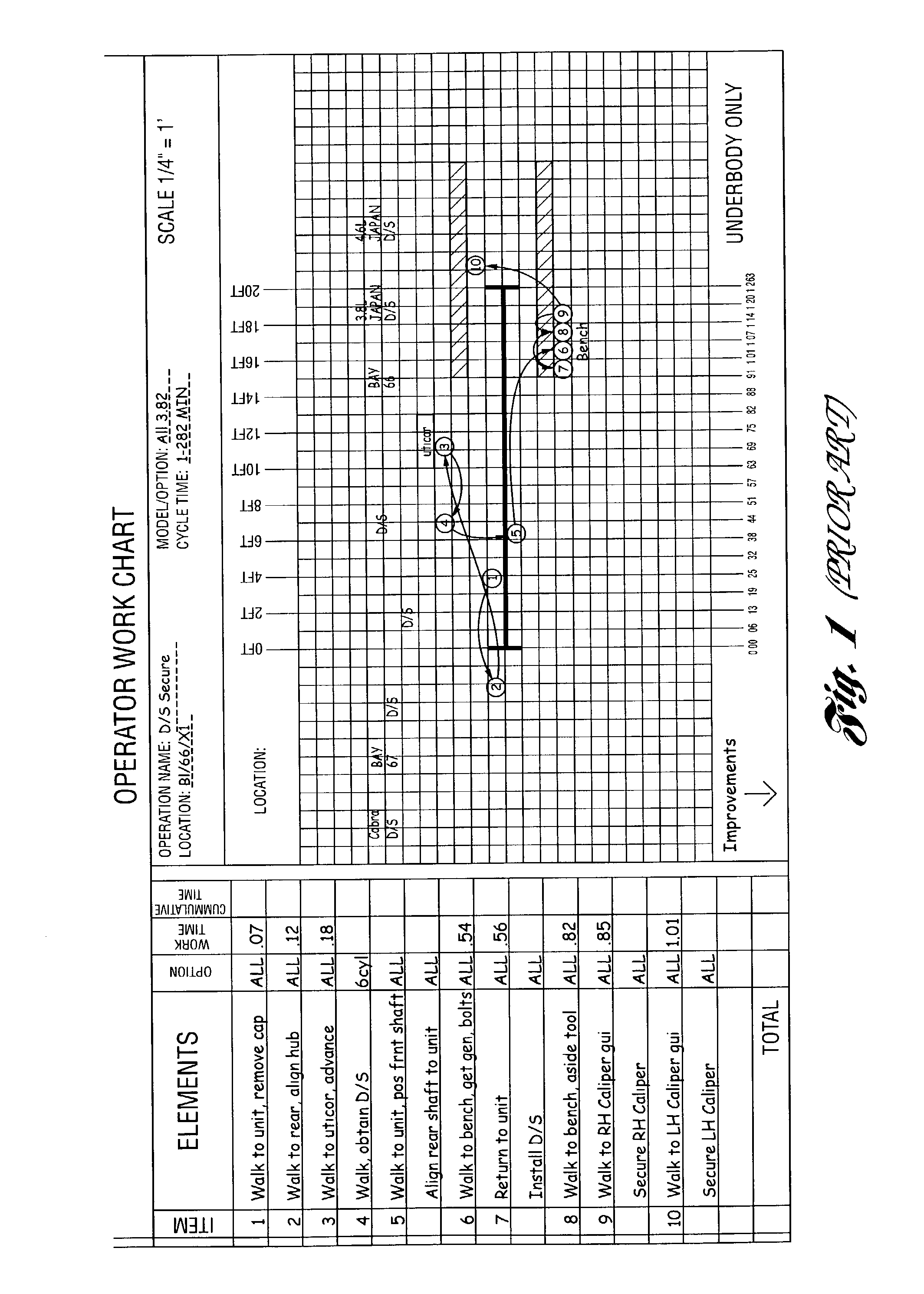Computer-implemented method and system for designing a workcell layout
a technology of workcell and computer, applied in computing, instruments, data processing applications, etc., can solve the problems of only performing layout design, layout design typically has to be completely recalculated, and is cumbersome and time-consuming, so as to reduce inefficiencies and facilitate use. , the effect of flexibility
- Summary
- Abstract
- Description
- Claims
- Application Information
AI Technical Summary
Benefits of technology
Problems solved by technology
Method used
Image
Examples
Embodiment Construction
[0030]The following detailed description of preferred embodiments of the present invention is described and illustrated in the context of the automotive industry. Those involved in the field of manufacturing and product assembly will recognize, however, that the innovative concepts associated with this invention may be applied to virtually any type of manufacturing or assembly.
MODAPTS
[0031]The concept of normal time is the time a qualified, experienced operator (approximately 5′-7″ 145 pounds) would work at a comfortable pace, which can be maintained all day without undue stress. This is often called an “air day's work” Modular Arrangement of Predetermined Time Standards (MODAPTS) is based upon this principle. See, International MODAPTS Assoc. (1990) copyrights, Kalamazoo, Mich. and Minter, A. L. (1983) MODAPTS; Management Services, MODAPTS may be used in assembly plants in place of the old-fashioned “stopwatch study”, which was a subjective way of determining on operator's efficien...
PUM
 Login to View More
Login to View More Abstract
Description
Claims
Application Information
 Login to View More
Login to View More - R&D
- Intellectual Property
- Life Sciences
- Materials
- Tech Scout
- Unparalleled Data Quality
- Higher Quality Content
- 60% Fewer Hallucinations
Browse by: Latest US Patents, China's latest patents, Technical Efficacy Thesaurus, Application Domain, Technology Topic, Popular Technical Reports.
© 2025 PatSnap. All rights reserved.Legal|Privacy policy|Modern Slavery Act Transparency Statement|Sitemap|About US| Contact US: help@patsnap.com



